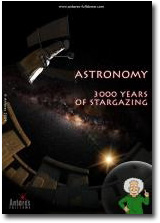Astronomy: 3,000 Years of Stargazing
HomeAstronomy: 3,000 Years of Stargazing
ดาราศาสตร์: 3,000 ปีแห่งการส่องดูดาว
(Astronomy: 3,000 Years of Stargazing)

|
ภาพยนตร์ดาราศาสตร์เต็มโดม
|
 |
Astronomy: 3,000 Years of Stargazing The sky, and everything that happens there, has always aroused the interest and curiosity of the human race. Eclipses, the regular cycle of the seasons, the motion of the stars… The ruins of Stonehenge and Machu Picchu bear witness to how these phenomena were studied with a view to predicting them. In the learned company of a cartoon Einstein, we’ll be revisiting the major astronomical milestones of the last 3000 years, from the cosmological models of antiquity, through the Ptolemaic system and the epicycles, to the contributions of Copernicus, Galileo, Kepler, Newton and Herschel, amongst others. We’ll also be reviewing the discoveries made possible by the use of technology, from the first telescope, designed by Galileo, to the modern ones in use both on earth and in space, which have revealed the wonderful objects contained in the cosmos to us: nebulae, pulsars, black holes… Only by looking back, and learning about sciences’ great triumphs in the past, can we hope to catch a glimpse of what its future findings might be. Meditating on the future of astronomy, all we can know for certain is that, happily, our curiosity will always be moving a few steps ahead of the reach of our telescopes.

Click To View Astronomy: 3000 Years of Stargazing
ภาพยนตร์ดาราศาสตร์เต็มโดม




